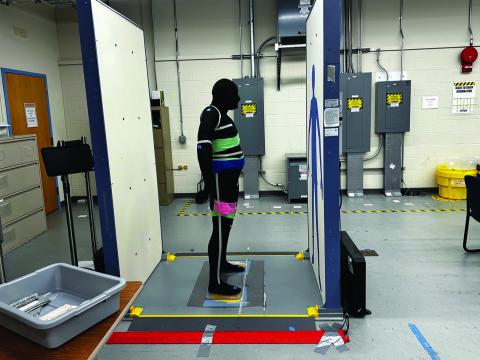Software Tool Trains First Responders to Deal with Complex, Dynamic Situations
First responders across the nation may soon be using a virtual training technology that allows multiple types of personnel, such as firefighters, police and paramedics, to train together. The prototype system is currently undergoing live tests with first responders to further refine the program before it is released to federal and state agencies some time in 2014.
A joint research and development venture between the Department of Homeland Security’s (DHS’s) Science and Technology Directorate, the U.S. Army Training and Doctrine Command and the U.S. Army Simulation and Training Technology Center, the Enhanced Dynamic Geo-Social Environment (EDGE) uses the same technology found in massive multiplayer online games to create a dynamic, scalable and customizable training environment, explains Christine Lee, DHS program manager for EDGE.
The need for a virtual training system like EDGE originated when a first responder resource group that advises the DHS on first response issues identified virtual training as its top priority, Lee says.
The prototype software was developed by the Army to train its personnel in a variety of situations. The DHS was attracted to the Army’s work because the service has extensive experience with virtual training systems, Lee says. The Army also had invested some $13 million into developing the software, while the DHS contributed an additional $3.1 million into the effort when it began the partnership, she explains.
The current prototype version of the EDGE software represents about seven to eight months of work, explains Lee. She adds that the program has seen very rapid development since the first modeling work began in February.
One of the major advantages of EDGE and what sets it apart from other simulations is that it allows all of the various types of first responders to work individually or together in a scenario. By allowing different groups to operate in the same virtual space, it permits them to develop joint strategic and tactical procedures, Lee says. She notes that this is the first simulation of this type that can perform multigroup participation, adding that tools capable of simulating unified joint commands or multiple first responder disciplines are very rare.
Another key differentiator between EDGE and a game-based simulation is that each scenario is always different—there are no patterns for participants to learn that allow them to “beat” the simulation, Lee explains. The software is designed to be highly dynamic and very detailed but to avoid scripted behaviors. For example, in the hotel scenario, if the fire is not put out, it will spread. Another realistic touch is that when the building’s fire alarm is set off, a firefighter must go down into the building’s basement and “physically” turn it off in the simulation, or it will continue to ring.
One way the simulation achieves its high level of dynamism is through the extensive use of people in the simulation. Almost every first responder, shooter and civilian is played by a human being, which adds to the unpredictability of the event, Lee explains. Civilian players can help the first responders, and they can become casualties themselves.
The simulation also makes use of sound: first responders will only be able to hear that other participants are speaking if they are in close proximity to them, unless they are actually using radios to communicate in the scenario.
EDGE was recently tested in November in Sacramento. The city police and fire department reacted to an active shooter scenario in a 26-story hotel modeled on an actual city building. In addition to allowing different first response groups to work together in the scenario to focus on their specific jobs—the police to respond to the shooter, firefighters to put out a fire in the building—the software also accurately modeled each of the different groups’ uniforms, Lee says.
When the software is released, other first responders can practice in the existing model that the Sacramento authorities used, or they can design and build their own models based on local needs, Lee explains. She adds that first responders can also contact the DHS, the Army or the vendor to develop or use additional models to meet their needs.
The Army is currently hosting the EDGE software on DHS servers, Lee explains. Besides residing on a server, EDGE can run on any average desktop or laptop computer with a good graphics card, she adds. The program also can be downloaded and run online. When the final version is released, it will be free for first responders to access and use, she says.
The next step for the EDGE program is to transition it to commercial or government users. The DHS has contacted Rutgers University to conduct a study to identify and transition the program, Lee says. According to DHS officials, the software platform will be released to state and federal agencies some time in 2014.
For a look at the EDGE program, watch the video below:




Comments